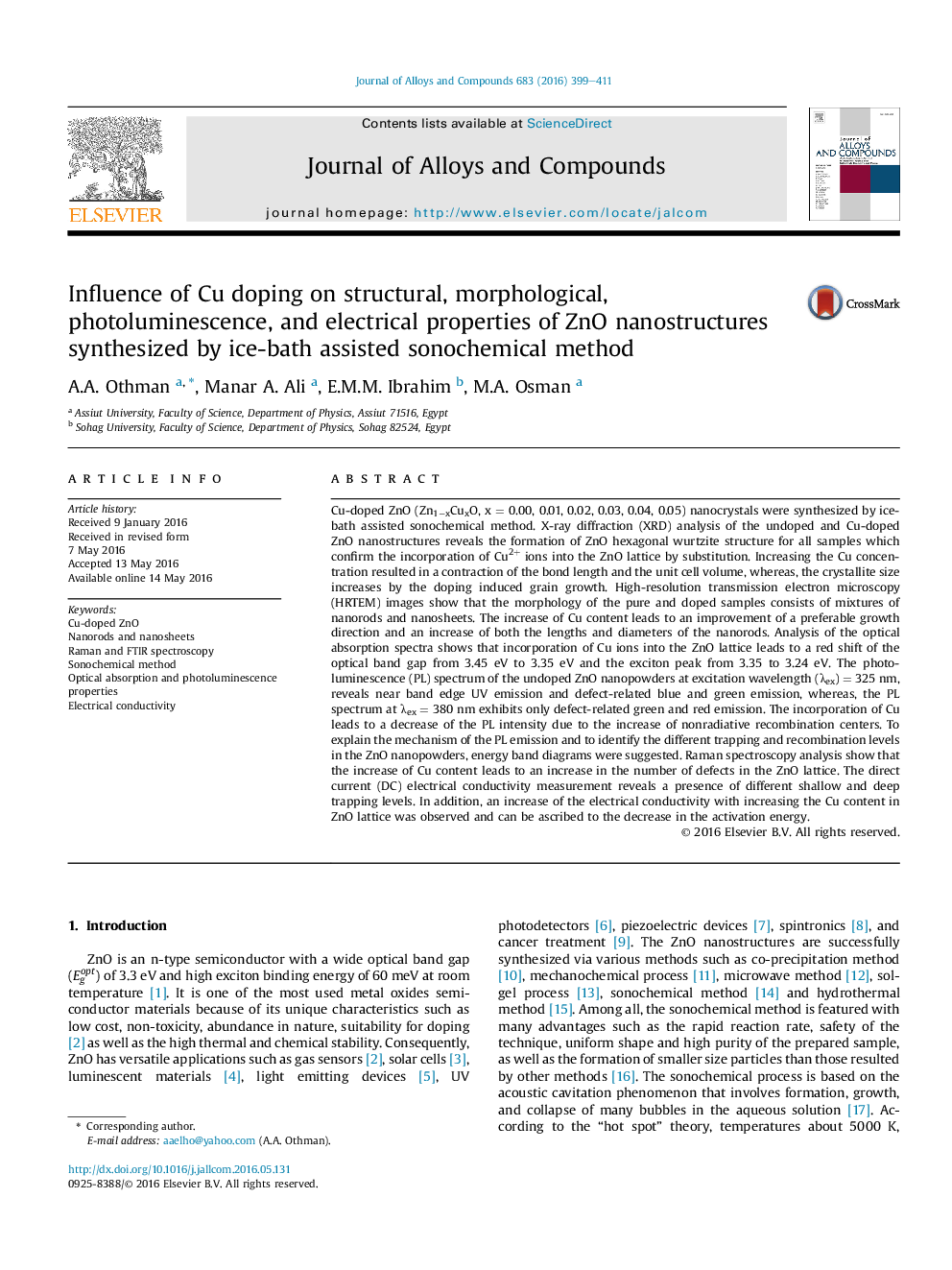| کد مقاله | کد نشریه | سال انتشار | مقاله انگلیسی | نسخه تمام متن |
|---|---|---|---|---|
| 1605481 | 1516210 | 2016 | 13 صفحه PDF | دانلود رایگان |

• Cu-doped ZnO nanocrystals were synthesized by ice-bath assisted sonochemical method.
• Structural, luminescent, optical and electrical properties were investigated.
• The UV–Vis absorption spectra reveal increase in transmittance of ZnO on Cu doping.
• The electrical conductivity increases with the increase of Cu content.
Cu-doped ZnO (Zn1−xCuxO, x = 0.00, 0.01, 0.02, 0.03, 0.04, 0.05) nanocrystals were synthesized by ice-bath assisted sonochemical method. X-ray diffraction (XRD) analysis of the undoped and Cu-doped ZnO nanostructures reveals the formation of ZnO hexagonal wurtzite structure for all samples which confirm the incorporation of Cu2+ ions into the ZnO lattice by substitution. Increasing the Cu concentration resulted in a contraction of the bond length and the unit cell volume, whereas, the crystallite size increases by the doping induced grain growth. High-resolution transmission electron microscopy (HRTEM) images show that the morphology of the pure and doped samples consists of mixtures of nanorods and nanosheets. The increase of Cu content leads to an improvement of a preferable growth direction and an increase of both the lengths and diameters of the nanorods. Analysis of the optical absorption spectra shows that incorporation of Cu ions into the ZnO lattice leads to a red shift of the optical band gap from 3.45 eV to 3.35 eV and the exciton peak from 3.35 to 3.24 eV. The photoluminescence (PL) spectrum of the undoped ZnO nanopowders at excitation wavelength (λex) = 325 nm, reveals near band edge UV emission and defect-related blue and green emission, whereas, the PL spectrum at λex = 380 nm exhibits only defect-related green and red emission. The incorporation of Cu leads to a decrease of the PL intensity due to the increase of nonradiative recombination centers. To explain the mechanism of the PL emission and to identify the different trapping and recombination levels in the ZnO nanopowders, energy band diagrams were suggested. Raman spectroscopy analysis show that the increase of Cu content leads to an increase in the number of defects in the ZnO lattice. The direct current (DC) electrical conductivity measurement reveals a presence of different shallow and deep trapping levels. In addition, an increase of the electrical conductivity with increasing the Cu content in ZnO lattice was observed and can be ascribed to the decrease in the activation energy.
Journal: Journal of Alloys and Compounds - Volume 683, 25 October 2016, Pages 399–411